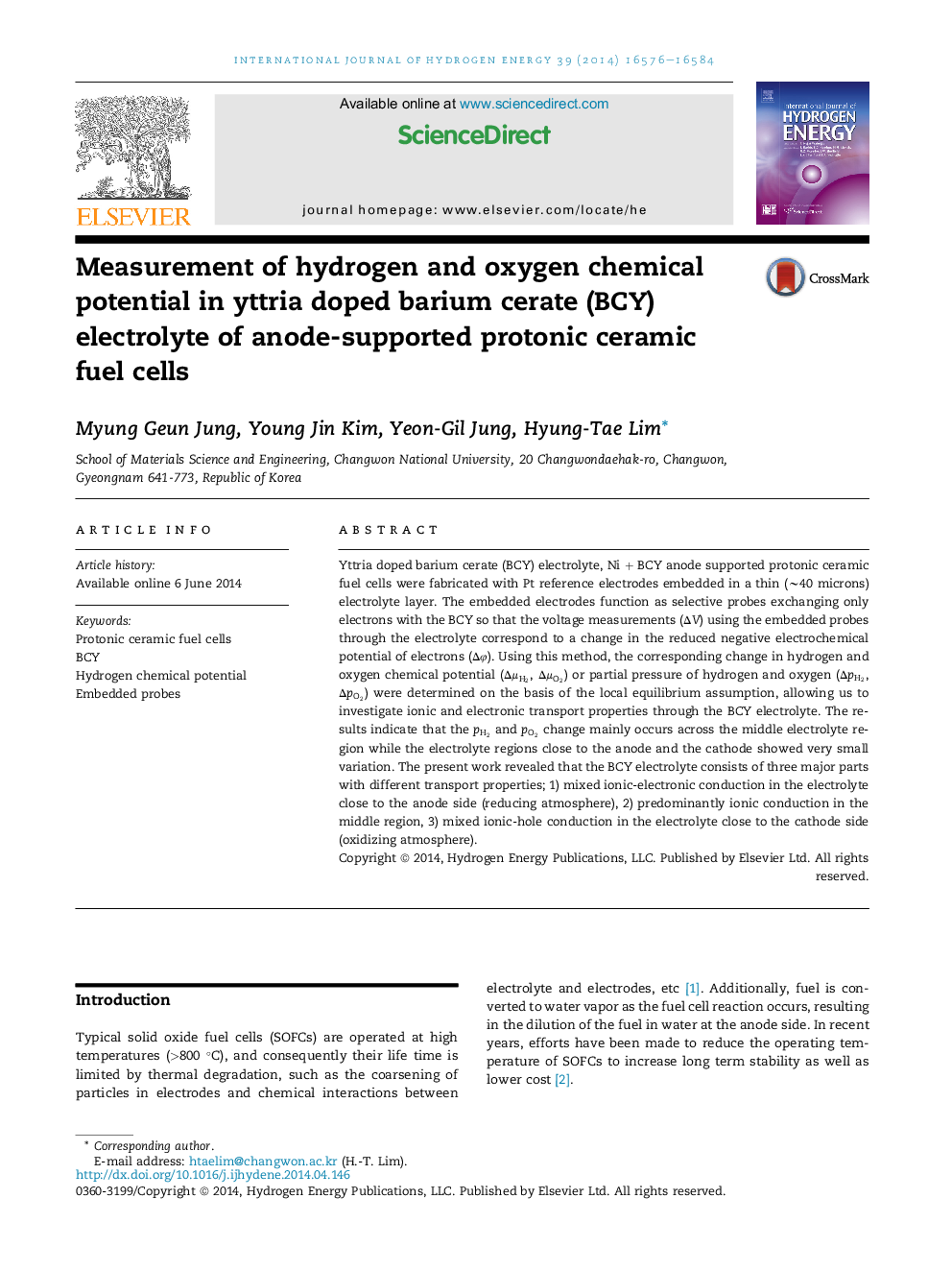| Article ID | Journal | Published Year | Pages | File Type |
|---|---|---|---|---|
| 1280998 | International Journal of Hydrogen Energy | 2014 | 9 Pages |
•Anode-supported cells were fabricated with embedded probes in a BCY electrolyte.•The pH2pH2 and pO2pO2 change mainly occurs across the middle electrolyte region.•Ionic conduction is dominant in the middle.•The electrolyte regions close to the electrode sides show very small pH2pH2 and pO2pO2 variation.•Mixed ionic-electronic (hole) conduction is dominant at the electrode sides.
Yttria doped barium cerate (BCY) electrolyte, Ni + BCY anode supported protonic ceramic fuel cells were fabricated with Pt reference electrodes embedded in a thin (∼40 microns) electrolyte layer. The embedded electrodes function as selective probes exchanging only electrons with the BCY so that the voltage measurements (ΔV) using the embedded probes through the electrolyte correspond to a change in the reduced negative electrochemical potential of electrons (Δφ ). Using this method, the corresponding change in hydrogen and oxygen chemical potential (ΔμH2ΔμH2, ΔμO2ΔμO2) or partial pressure of hydrogen and oxygen (ΔpH2ΔpH2, ΔpO2ΔpO2) were determined on the basis of the local equilibrium assumption, allowing us to investigate ionic and electronic transport properties through the BCY electrolyte. The results indicate that the pH2pH2 and pO2pO2 change mainly occurs across the middle electrolyte region while the electrolyte regions close to the anode and the cathode showed very small variation. The present work revealed that the BCY electrolyte consists of three major parts with different transport properties; 1) mixed ionic-electronic conduction in the electrolyte close to the anode side (reducing atmosphere), 2) predominantly ionic conduction in the middle region, 3) mixed ionic-hole conduction in the electrolyte close to the cathode side (oxidizing atmosphere).
